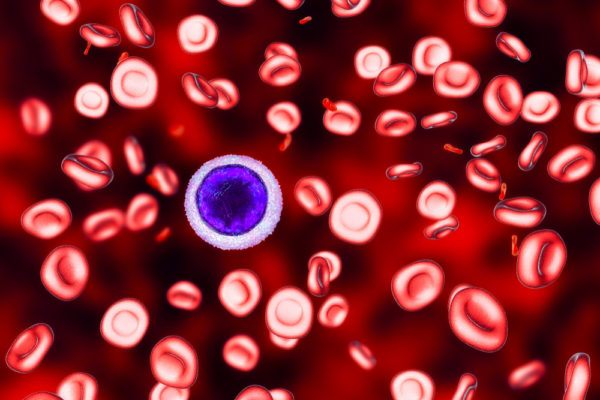Iron Deficiency Drug Injectafer Lawsuits
Injectafer is an injectable treatment for adults who suffer from low iron levels, a condition called iron deficiency anemia. Daily iron supplements can be harmful or ineffective for some patients. Injectafer, also known as ferric carboxymaltose injection, is the most popular alternative treatment of its kind and is approved in more than 83 countries.
The iron complex drug is under fire from users who claim they were not adequately warned of their significant risk of developing a severe case of hypophosphatemia (HPP) while taking it.

Hypophosphatemia is a dangerously low level of phosphorus in the blood that can cause rapid muscle and bone weakness, coma, and death. Many hypophosphatemia patients who used Injectafer have filed lawsuits against American Regent and other drug manufacturers, and more are expected to follow.
What Is Injectafer? What Does It Treat?
 Injectafer is a prescription medication for patients whose bodies cannot naturally produce normal levels of iron. Daily iron supplements are the best treatment for low iron levels, but some patients are unable to correctly absorb or tolerate them.
Injectafer is a prescription medication for patients whose bodies cannot naturally produce normal levels of iron. Daily iron supplements are the best treatment for low iron levels, but some patients are unable to correctly absorb or tolerate them.
Injectafer is injected directly into the vein by a healthcare provider in a single dose or two doses one week apart and is meant to gradually release the iron into the patient’s system, stabilizing iron levels within minutes with less potential for side effects. Most patients only need one treatment.
This medication is mainly used to treat iron deficiency anemia (IDA), a condition in patients who lack healthy red blood cells. Red blood cells carry hemoglobin, a protein that delivers oxygen to the body’s tissues. Low hemoglobin results in chronic weakness, fatigue and shortness of breath.
Iron deficiency anemia can be mild and easily confused with a simple case of being overly tired but will worsen if untreated. Possible IDA symptoms include:
- Extreme fatigue and weakness
- Pale skin, brittle nails, cold hands and feet
- Headache, dizziness, lightheadedness
- Chest pain, rapid heartbeat, shortness of breath
- Sore or inflamed tongue
- Poor appetite or craving non-food items such as ice and dirt
People who experience heavy blood loss can develop iron deficiency anemia, such as those with slow gastrointestinal bleeding like ulcers, hernias or polyps. Women with heavy periods or pregnant women losing iron to their fetus are also at risk. Other possible causes include taking too many over-the-counter pain relievers and not eating enough iron-rich foods like eggs, meat and leafy greens.
Women, in general, are more prone to anemia because they menstruate. Infants and children who need extra iron as they grow, vegetarians who don’t consume enough iron, and people who donate blood frequently can also develop iron deficiency anemia.
Untreated IDA can result in severe health problems such as enlarged heart or heart failure, growth and development issues, increased susceptibility to infection and premature birth.
Diagnosing iron deficiency anemia involves testing levels of red blood cells, hemoglobin and ferritin, a protein that helps with iron storage. Doctors who suspect IDA will likely check for internal bleeding via endoscopy, colonoscopy or ultrasound.
The easiest and most common treatment for iron deficiency anemia is a daily iron supplement, but because they are not effective for all patients, blood transfusions or iron injections may be necessary.
What Are The Risks of Using Injectafer?
Typically, a patient will be monitored closely for 30 minutes after receiving Injectafer to check for mild side effects like an allergic reaction. Mild side effects, which usually present and resolve quickly, can include those seen in many medications, like nausea, diarrhea, dizziness, high blood pressure and facial flushing/redness.
But the most serious complication of using Injectafer is the risk of developing hypophosphatemia (HPP), which occurs when the body’s phosphorus levels drop. Phosphorus is an important mineral that assists with energy production, nerve function, and strong teeth and bones.
Acute HPP comes on fast and is more severe; chronic HPP appears over a long period of time. Each type has several different underlying causes, including but not limited to alcoholism, respiratory issues, hormonal imbalances, malnutrition, abusing medication, and diabetic ketoacidosis. No matter the cause, hypophosphatemia adversely affects the entire body.
Hypophosphatemia is usually not obvious and can even be asymptomatic. Doctors must weigh symptoms with the patient’s medical history. These can include:
- Muscle pain, depletion, weakness or numbness
- Weakened or softened bones
- Poor reflexes or seizures
- Problems with blood
- Altered mental state
- Heart failure
Mild hypophosphatemia can be cured with phosphate supplements or treatment. Untreated severe hypophosphatemia can be fatal or have life-threatening consequences, including acute respiratory failure, irregular heart rhythm, death of muscle tissue, and red blood cell destruction.
Research Links Injectafer to Hypophosphatemia
 Injectafer’s label lists hypophosphatemia as a common side effect, but it has still been widely considered a “benign and transient” condition. However, several recent studies have shown that the drug may pose a more severe risk of HPP than previously believed.
Injectafer’s label lists hypophosphatemia as a common side effect, but it has still been widely considered a “benign and transient” condition. However, several recent studies have shown that the drug may pose a more severe risk of HPP than previously believed.
Two clinical trials published in the February 2020 issue of the Journal of the American Medical Association showed that Injectafer has a substantially higher risk of causing severe HPP than one of its main competitors.
A 2018 Duke Clinical Research Institute study comparing Injectafer to another competing drug, Feraheme, found that Injectafer users were much more likely to have persistent severe or extreme hypophosphatemia by the end of the five-week experiment. Over 50% of Injectafer users developed a severe case, versus just 0.9% of Feraheme users. 10% of patients treated with Injectafer had “extreme” hypophosphatemia.
Other clinical trials have shown a significant correlation between Injectafer and hypophosphatemia, and more studies are on the horizon.
FDA Approves New Injectafer Dosage Options
Injectafer was first introduced by Luitpold Pharmaceuticals in 2007. In 2008, it received a non-approvable letter from the Food and Drug Administration (FDA), which requested additional clinical studies to address safety concerns. Luitpold re-submitted it for approval in 2011 after performing two large-scale clinical trials, but was again denied FDA approval in 2012.
The FDA’s second disapproval was not to the drug itself but to its manufacturing facility in New York, which had revealed several issues during a recent inspection. It wasn’t until 2013 that Injectafer finally received FDA approval for its two-dose option.
May of 2021 brought the FDA approval of the single-dose Injectafer in 1000 mg instead of the original 1500 mg over two injections. The two-dose regimen was found to be best for patients over 110 pounds, but the new single dose was a more convenient way for those under that weight to replenish their iron.
In December 2021, the FDA announced its approval of two-dose Injectafer for pediatric IDA patients over one year old.
These approvals have come despite increasing scientific evidence that Injectafer causes hypophosphatemia. And patients with hypophosphatemia who believe Injectafer triggered their conditions are starting to fight back.
Injectafer Lawsuits
The lawsuits against American Regent, Luitpold Pharmaceuticals and other makers of Injectafer allege that the drug caused their hypophosphatemia and subsequent chronic health problems and failed to warn consumers of the risks. Over 50 individual claims have been filed in the U.S. District Court, Eastern District of Pennsylvania.
One Florida woman who filed a lawsuit in January 2020 developed severe hypophosphatemia that required hospitalization; while she survived, she has continued to experience a wide variety of ongoing respiratory and gastrointestinal issues.
Maria Monroe received just two infusions of Injectafer in 2018, landed in the hospital and now deals with chronic hypophosphatemia. Another plaintiff, Katherine Crockett, had to take an extended leave of absence from her job when she developed severe HPP, and alleges that Luitpold Pharmaceuticals marked Injectafer as safe while being reasonably aware that it could dangerously lower phosphorus levels.
Possible compensation for these plaintiffs could include lost wages or decreased ability to earn a living due to debilitating hypophosphatemia symptoms, medical bills, suffering and mental anguish, quality of life, spouse’s loss of companionship and more.
Whether Injectafer’s producers will be held accountable for causing hypophosphatemia in its users remains to be seen,









